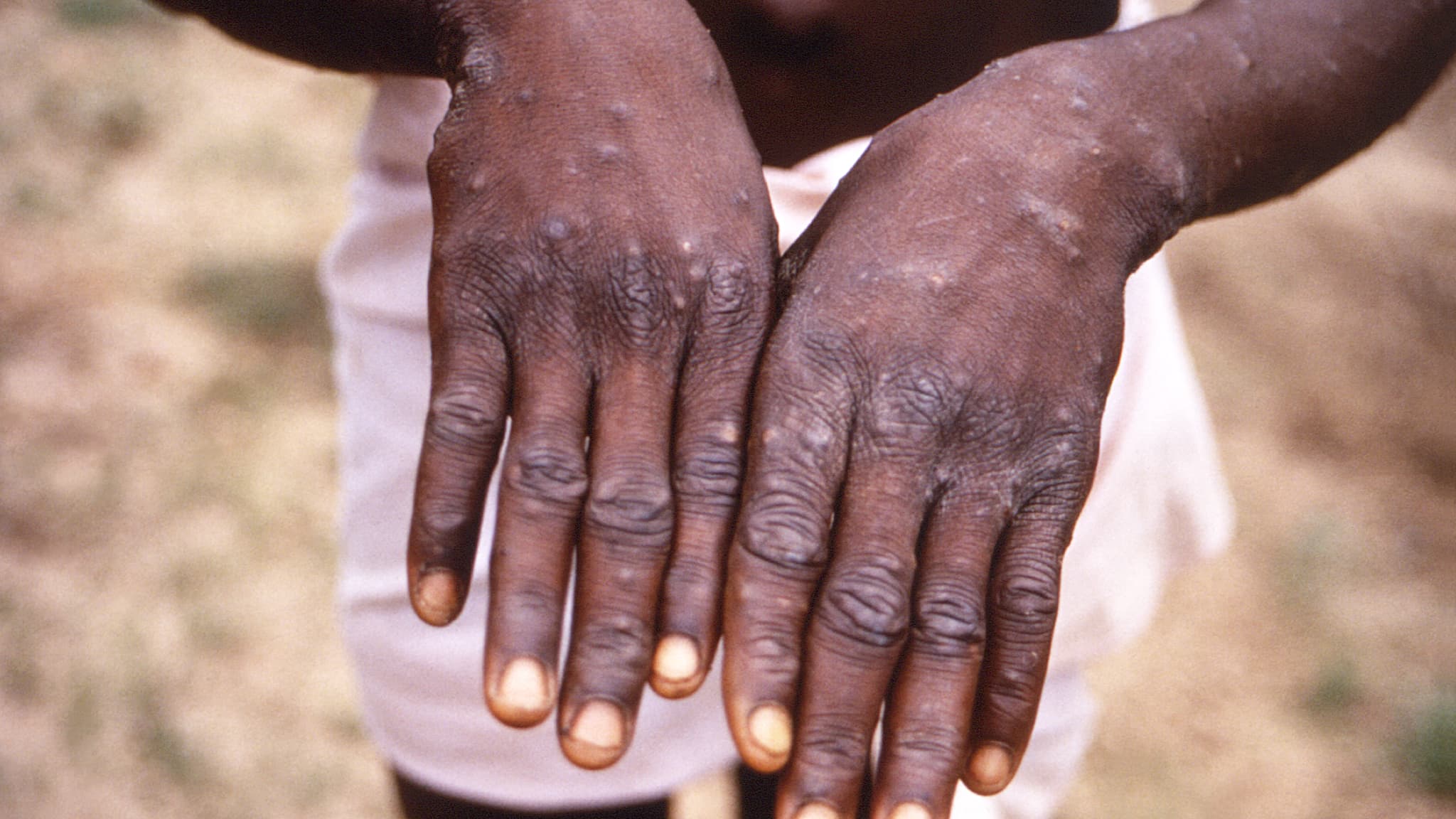The mpox virus causes several symptoms, the most recognizable of which is the appearance of skin lesions, which are sometimes very painful.
A painful and potentially fatal disease. MPOX, previously called monkeypox, is causing concern again as the World Health Organization (WHO) on Wednesday, August 14, triggered its highest level of alert internationally in the face of the resurgence of cases of this virus in Africa. The WHO had taken the same decision in July 2022, when an MPOX epidemic had spread across the world, before lifting it in May 2023.
MPOX infection manifests itself as a skin rash that appears mainly on the face, in the anogenital area, the palms of the hands and soles of the feet. They can also be present on the trunk and limbs. The mucous membranes are also affected, in the mouth and the genital area, details the French Ministry of Health website.
Fever, headache…
The lesions go through different successive stages: macule (flat, red spot), papule (small, solid pimple), vesicle (hollow blister), pustule (lesion filled with purulent fluid) and then scab. When the scabs fall off, the lesions heal, which seems to signal the end of the contagiousness.
The rash may be accompanied by fever, headache, body aches and weakness. The lymph nodes may be swollen and painful, under the jaw, in the neck or in the groin crease. Sore throat is also reported.
“The incubation period of the disease can range from 5 to 21 days. The fever phase lasts approximately 1 to 3 days. The disease most often resolves spontaneously, after 2 to 3 weeks but sometimes 4 weeks,” indicates the Ministry of Health.
A new, more deadly strain
The disease can cause severe pain, particularly in the case of anorectal lesions. In some cases, the disease worsens with superinfection of skin lesions or respiratory, digestive, ophthalmological or even neurological disorders. Immunocompromised people, pregnant women and young children are at greater risk of developing a severe form of the disease, which can lead to the death of the patient.
Several strains of the virus exist. “Clade” (group) I first circulated in the Congo and its basin, while clade II multiplied rather in West Africa. But the virus that worries the health authorities is clade Ib, derived from I. Unlike the other strains that cause localized lesions, it causes rashes all over the body.
This Thursday, August 15, a person living in the Stockholm region of Sweden was diagnosed as carrying this variant, a first outside Africa.
The virus is transmitted through “close” contact with the infected person, particularly during sexual (heterosexual and homosexual) or intimate exchanges. The disease can also be spread through the exchange of contaminated objects. The modes of transmission of the disease are still being studied.


